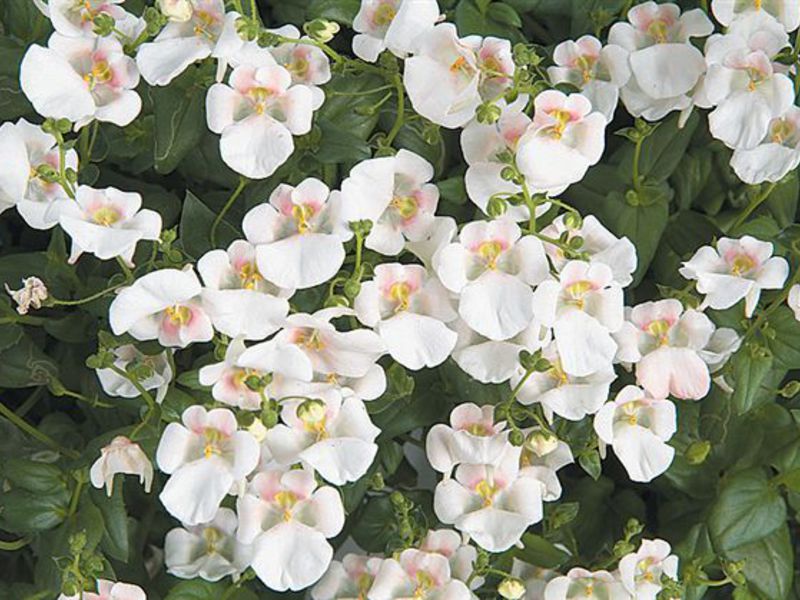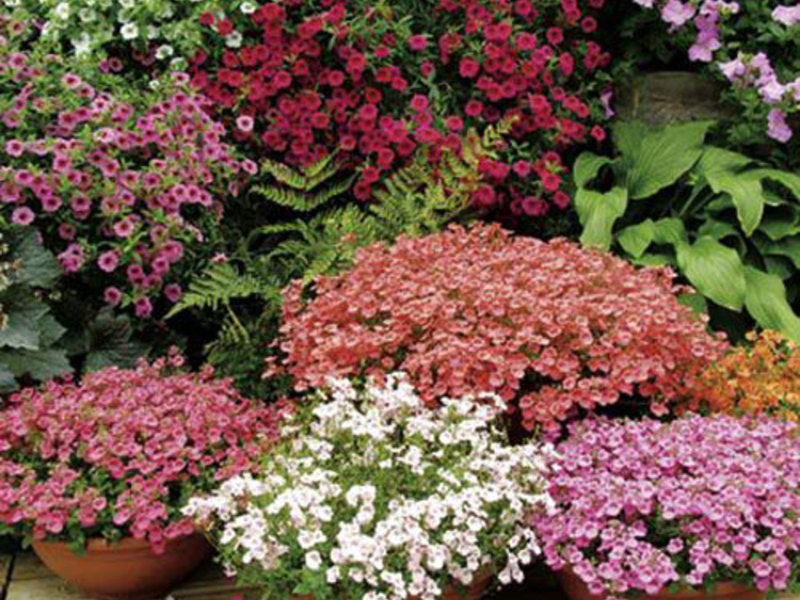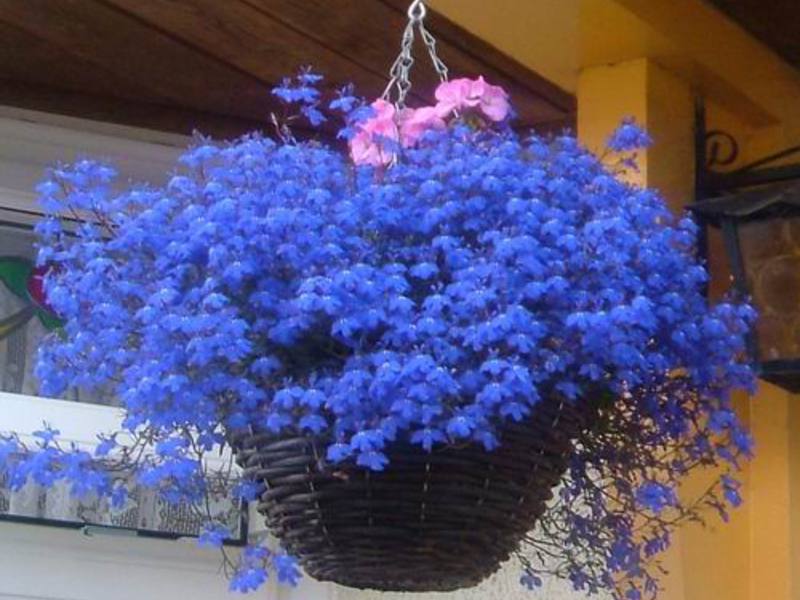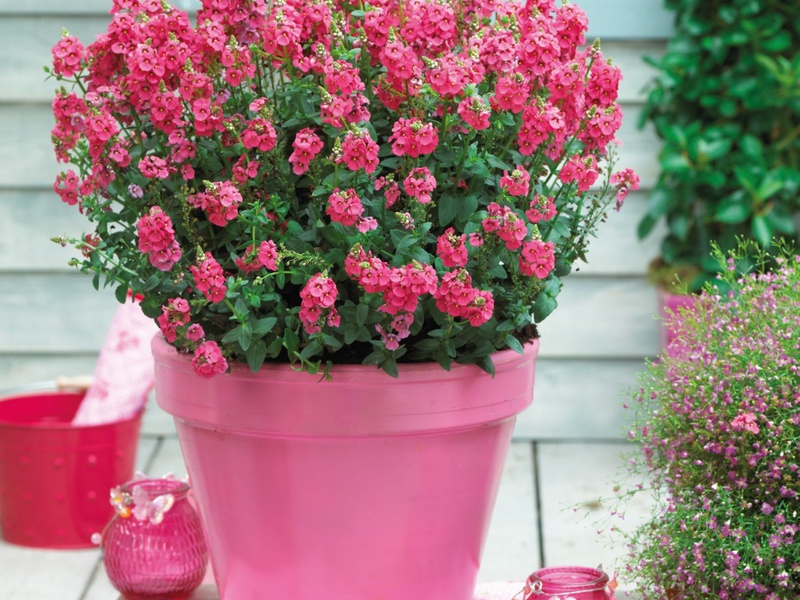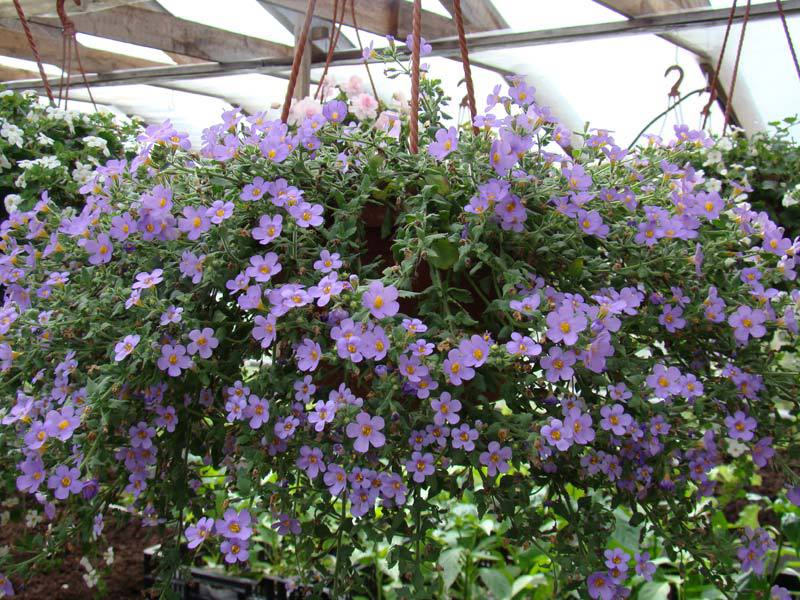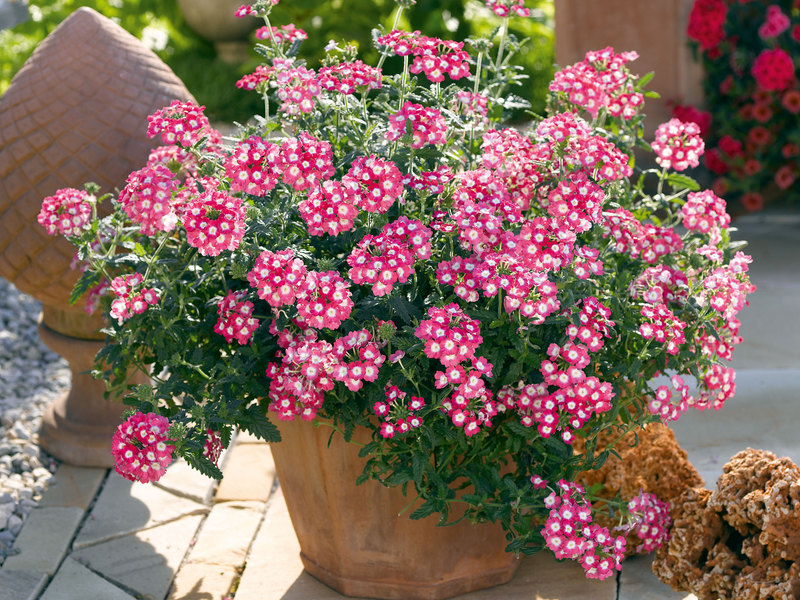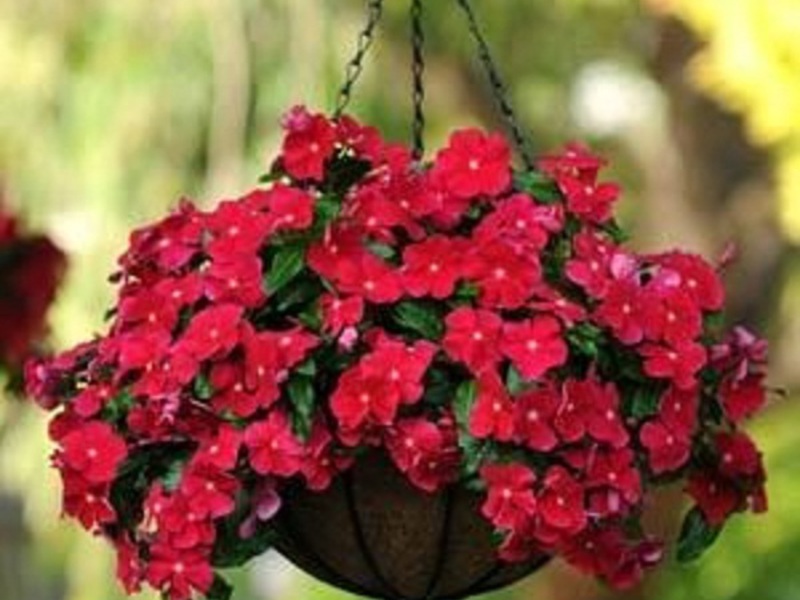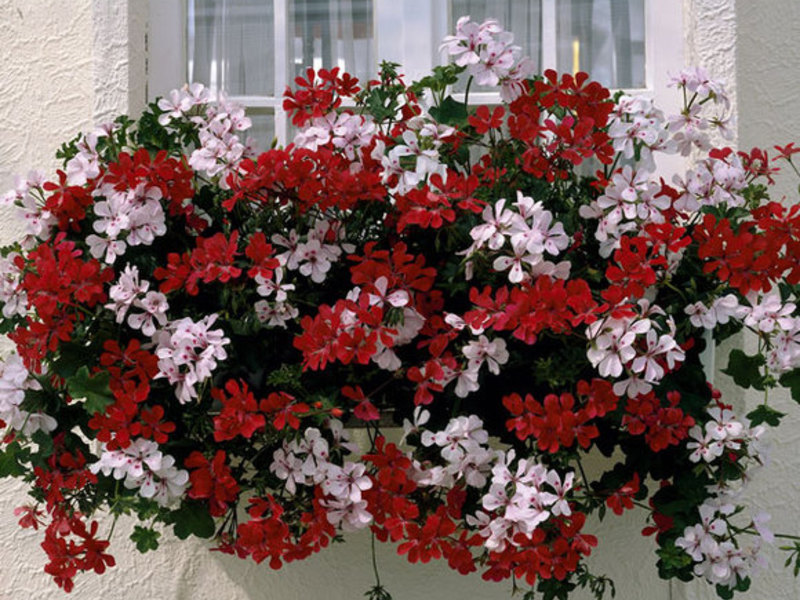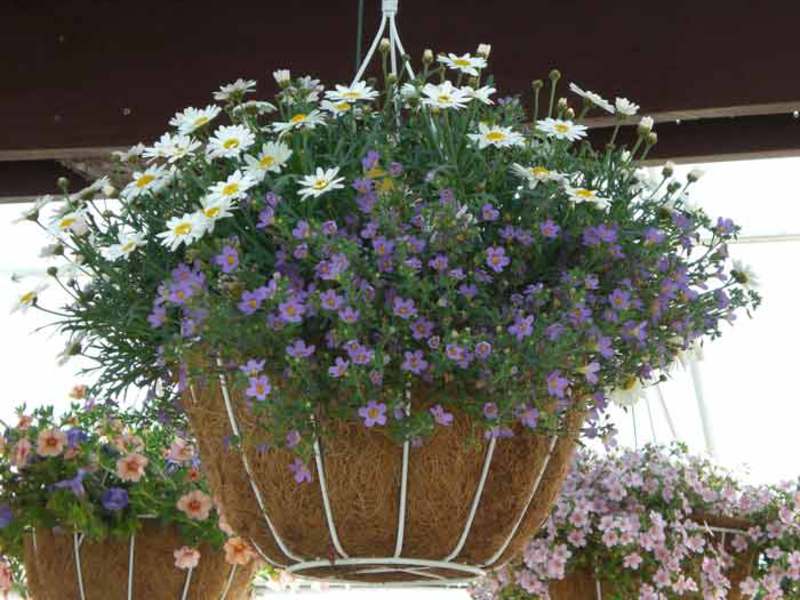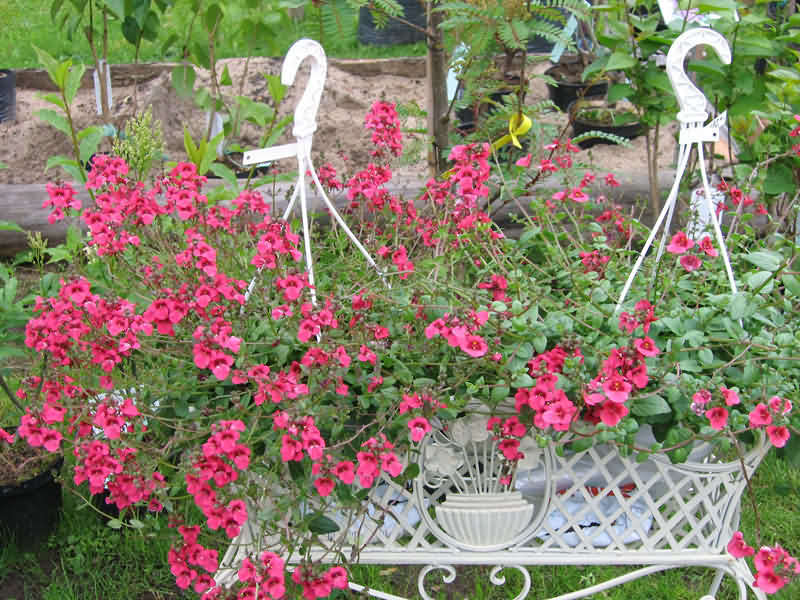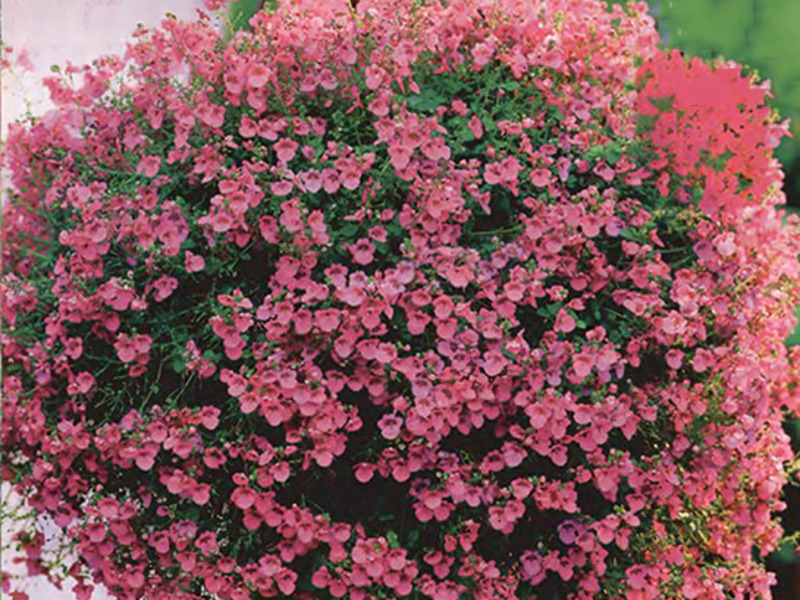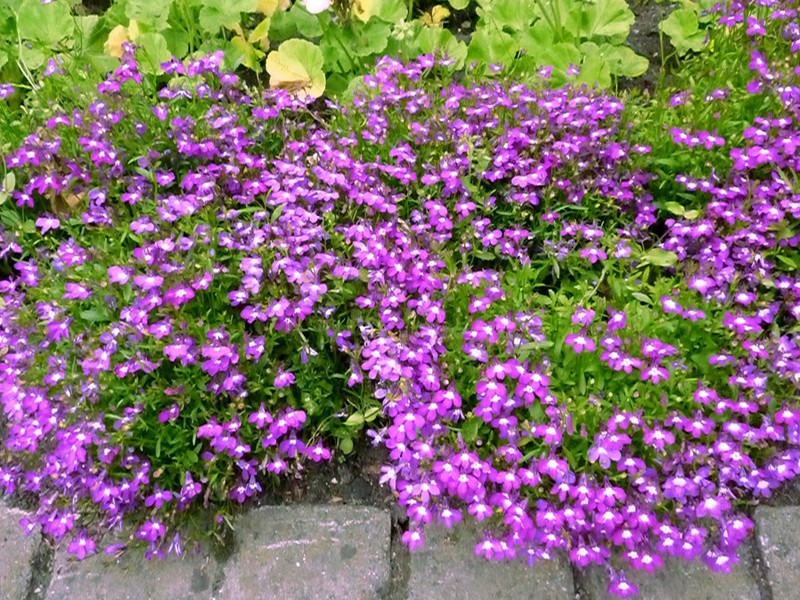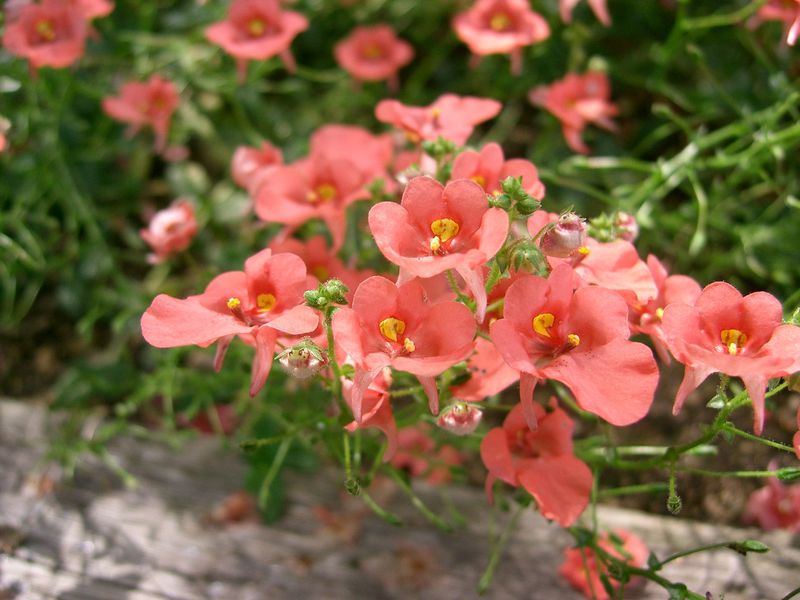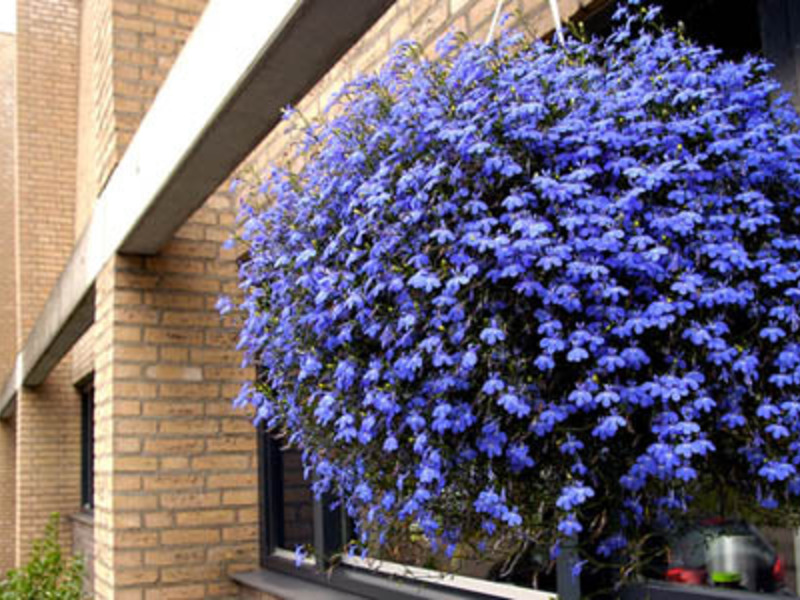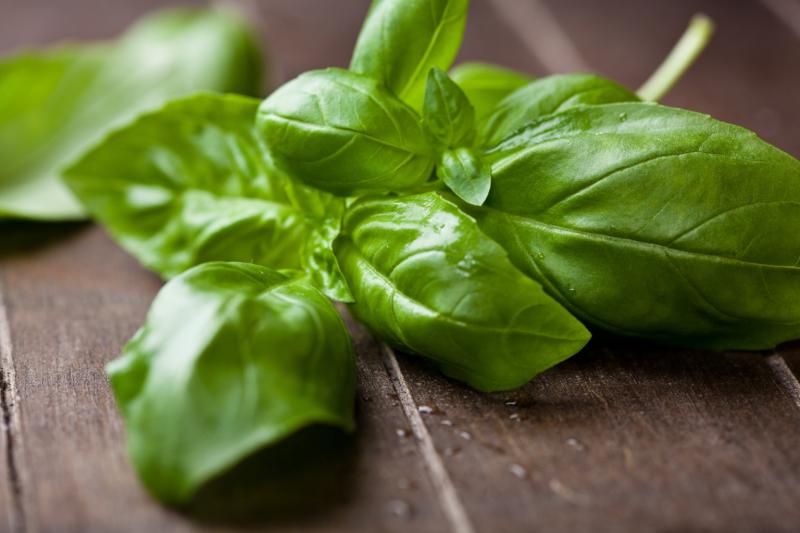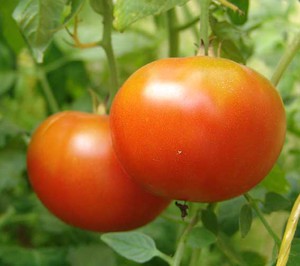Diascia is a beautifully flowering, graceful plant of the norichnikovykh. The flower is native to South Africa, so in many regions of our country it is grown as an annual plant. In the open field, it is used as an ampel or ground cover plant. Very often terraces, loggias and balconies are decorated with diastia. The plant is unpretentious in care, but for its successful cultivation, all the features must be taken into account.
Content
Diastia: description of the flower, types and varieties with a photo
Diastia is a low-growing plant with creeping or straight stems. Under natural conditions, stems reaching one meter, grow up to 25-60 cm in gardens... Shoots are covered with opposite glossy dark green toothed leaves. The flowers are a tubular perianth with five lobes. The three lower large lobes form the lower lip, and the upper two have spurs. Flowers reaching 20 mm in diameter can be purple, salmon, orange, pink.
Diastia blooms in the open field from the very spring to frost in waves. The first bloom is about one and a half months. In spring and autumn, more buds are formed on the bushes than in summer.
Diascia numbers about fifty species, of which only a few are used in floriculture.
Diastia bearded is grown as an annual and is a compact bush up to 30 cm high.The plant begins to branch and bloom already at a growth of 10 cm.From shiny leaves at the base of the plant a thick cushion is formed... Lush and spectacular flower stalks consist of small flowers of a wide variety of shades. The species is widely used as an ampelous plant and is planted in various decorative pots and pots. The most popular varieties of bearded diastia are:
- The variety "Pink Queen" is distinguished by light pink inflorescences with a milky tint.
- The Ruby Field variety is the result of crossing the heart-shaped and bearded diasters. It is grown both in flower beds and in hanging pots. It blooms with pink flowers with a dark center.
Felt diastia is distinguished by its numerous colorful leaves, therefore it is used to decorate plots, balconies and rooms even outside the flowering phase. In the open field it blooms throughout the summer with unusual small flowers. Their forward-pointing lower spurs are dark pink with red patches in the center. Each flower reaches 2 cm in diameter. Peduncles grow up to 25 cm.
Diastia harsh is a plant with shoots up to 50 cm long. Light green leaves acquire a reddish-brown color by autumn. The inflorescences consist of dark pink flowers with a diameter of up to 2 cm. This is the most cold-resistant species, which in many European countries is grown in the open field as a perennial.
Diastia elegant is a shrub with erect or lodging stems, the length of which can be up to 30 cm. Shoots are covered with small leaves and pink flowers.
Diabetes vigilant grown as an ampelous plant. Its lodging shoots up to 30 cm long root themselves. At the tops of the shoots, buds are quickly formed, which turn into pink flowers.
Diascia - features of planting and care
 Since the flower naturally grows on the eastern slopes of the mountains of South Africa, the plant needs a well-lit, warm place.
Since the flower naturally grows on the eastern slopes of the mountains of South Africa, the plant needs a well-lit, warm place.
Planting should be carried out on well-drained soil, since the plant does not tolerate stagnant water. Therefore, when growing ampel diastia, additional drainage is added to the pots, and when growing plants in open ground, the soil is mixed with sand. Diascia will grow well on neutral soils, slightly acidic loams or sandy loam mixtures. She does not need too fertile soil.
Watering and feeding
The plant is watered abundantly and regularly, especially during flowering and on hot days. The plant does not require intensive feeding. When caring for diastia, it will be enough to add once a month special complex fertilizers for flowering plants.
In order for the bush to grow well, pick up buds and bloom for a long time, you should avoid too fertile soil mixtures, abundant feeding and the use of organic fertilizers. Otherwise, the shoots of the plant will stretch out, and the flowering will weaken.
After the first flowering, experienced florists recommend doing a radical emergency trimming of the diastia. It is necessary to cut the plant so that only shoots up to 5 cm long remain. Then the bush is abundantly watered and fed. During the whole season, faded and wilted flowers are regularly removed. This will help the plant to bloom even longer.
Diastia in winter
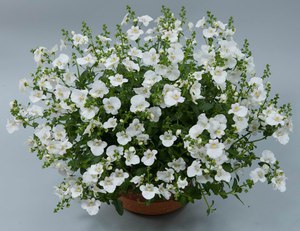 The plant is grown as an annual because it does not tolerate sub-zero temperatures. Therefore, in the fall, the bushes are removed or dug up, and stored in a well-lit room. with an air temperature of + 5C... The shoots of the dug bushes are cut in half, and the plants themselves are planted in containers filled with fresh soil.
The plant is grown as an annual because it does not tolerate sub-zero temperatures. Therefore, in the fall, the bushes are removed or dug up, and stored in a well-lit room. with an air temperature of + 5C... The shoots of the dug bushes are cut in half, and the plants themselves are planted in containers filled with fresh soil.
In the spring, diasses preserved in this way are hardened before being planted in the ground. To do this, they need to be exposed to fresh air for several hours on warm days. Flowers planted on the site are fed before flowering.
Methods for breeding diastia
There are two ways to propagate a plant:
- seeds;
- cuttings.
Seed propagation
For seedlings, seeds are sown in February. Plants grown in this way will bloom in July.
Sowing is carried out in containers filled with earth. The seeds are not sprinkled with earth, but simply pressed and sprayed with warm water. The seedling boxes are covered with glass and placed in a warm place. The first crops should appear in 10-25 days.
When the first shoots appear, the boxes are placed in a well-lit, but cooler place with an air temperature within + 15- + 17C... As soon as two or three true leaves appear, the seedlings dive. Caring for them is only to keep the soil moist. Diastia seedlings are very viable, grow quickly and tiller early.
At the end of May, ampelous diastosis of several bushes are planted in a hanging basket, and plants with erect stems are planted in open ground at a distance of 15 cm between plants.
Diascia seeds can be grown directly in the open field. However, in this case, flowering will begin only in August.
Propagation by cuttings
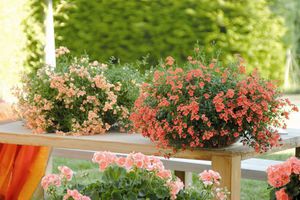 Cuttings can be cut from the bushes dug in the fall and saved in the spring. Cuttings with 3-5 leaves take root in a moist substrate. After about a month, their top will need to be pinched. Rooted plants in open ground are planted in spring in a well-lit area protected from cold winds.
Cuttings can be cut from the bushes dug in the fall and saved in the spring. Cuttings with 3-5 leaves take root in a moist substrate. After about a month, their top will need to be pinched. Rooted plants in open ground are planted in spring in a well-lit area protected from cold winds.
Diastia can be propagated by root cuttings, which are separated from the main plant in autumn. Delenki are planted in pots filled with earth, in which they spend the winter in well-lit, cool rooms. To enhance bushiness after rooting, the cuttings are pinched. Diastia propagated by cuttings will bloom at the end of May.
Diseases and pests of diastia
The plant is resistant to pests and diseases, but under some growing conditions, it can get sick.
- In rooms with dry air, whiteflies and aphids may appear on shoots and leaves. The fight against them is to treat the plant with insecticides.
- With excessive moisture, diastia can get sick with fungal diseases in the form of stem or horse rot. In this case, treatment with fungicidal preparations is necessary.
- Creeping shoots of ampelous plants grown in the ground can be attacked by snails or slugs. In this case, the stems are lifted from the ground and tied to supports.
Diastia in landscape design
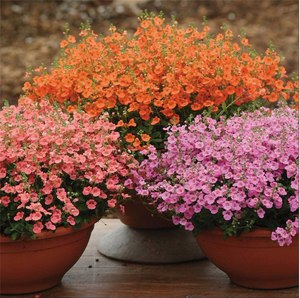 When growing a plant in an open field, you can use traditional directions, and decorate flower beds, flower beds, small areas, garden paths with a diagonal. She can fill the space between plants, use in mikboxers and rocky rock gardens.
When growing a plant in an open field, you can use traditional directions, and decorate flower beds, flower beds, small areas, garden paths with a diagonal. She can fill the space between plants, use in mikboxers and rocky rock gardens.
Ampel diassions grown in floor pots, hanging garden peas or decorative baskets look especially impressive.
The plant can be used as a low curb or in compositions with contrasting crops. With the help of erect species against the background of the grassy cover, you can make a color spot that will seem to float in the air.
With good care, grown from seeds or cuttings, diastia will look good and delight with its long flowering in both single and combined plantings.
